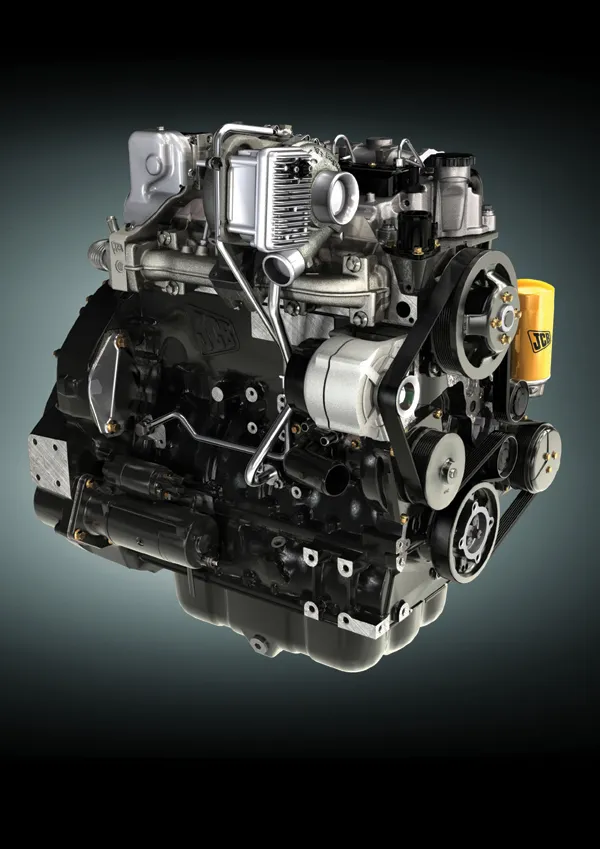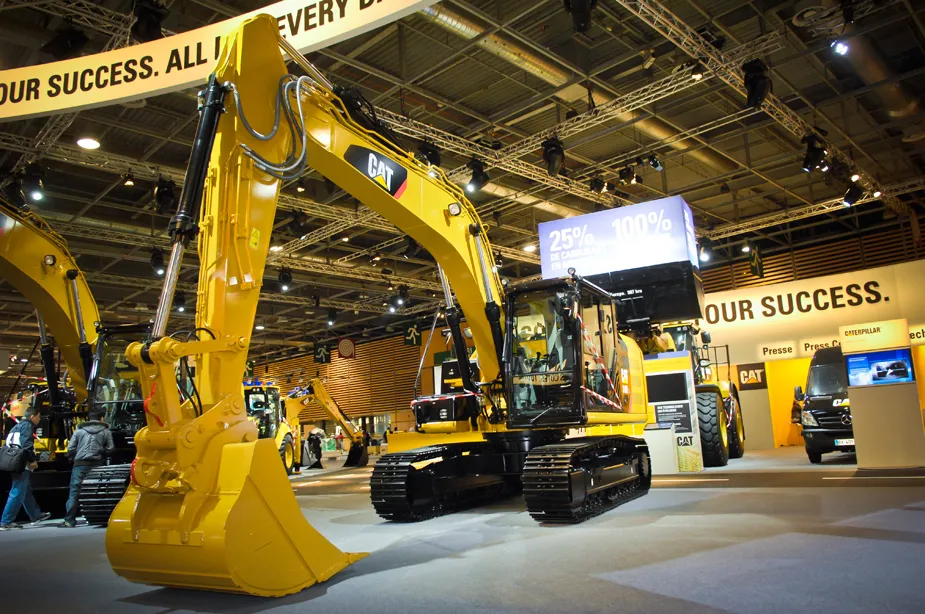New engine emission regulations pose major challenges for engine manufacturers - Geoff Ashcroft reports. The arrival of emissions regulations in January for engines over 130kW has meant that engine makers have adopted varied technologies to meet and exceed those goals. For the end user though, buying new kit that complies with Tier 4 Interim/Stage IIIB emissions regulations is likely to carry additional costs.
February 16, 2012
Read time: 7 mins

New engine emission regulations pose major challenges for engine manufacturers - Geoff Ashcroft reports
The arrival of emissions regulations in January for engines over 130kW has meant that engine makers have adopted varied technologies to meet and exceed those goals. For the end user though, buying new kit that complies with Tier 4 Interim/Stage IIIB emissions regulations is likely to carry additional costs.The Tier 4 Interim/Stage IIIB emissions apply to diesel engines producing 130-560kW. This means that Nitrogen Oxide (NOx) levels must be reduced by 45% and particulate matter (PM) must be reduced by 90%, when compared to current Stage IIIA requirements.
And by 2014, when Tier 4 Final/Stage IV legislation arrives, NOx levels need to be cut by an additional 45% for engines above 130kW. It is no coincidence that fuel quality has also had to fall into line too, and what has been tagged clean diesel, ultra-low sulphur diesel (ULSD), has now become much more readily available for off-highway use.
Previous fuel quality, or the lack of it, has allowed off-highway diesel to contain a maximum allowable sulphur content of up to 1000parts/million, and this has now been slashed to 15 parts/million for North America and 10 parts/million for Europe, with the latest fuel supplies.
"High levels of sulphur will dramatically reduce the effectiveness of the exhaust after-treatment, which dictates that ULSD is necessary for most after treatment processes," said Steve Nendick, Cummins' communication director. "Ultra-low sulphur diesel fuel also produces less PM from combustion and will also enable a major reduction in sulphur dioxide (SO2) emissions from off-highway engines." But European operators should not mistakenly look forward to higher-quality diesel fuel to feed their high-tech Stage IIIB engines, as the majority of off-highway ULSD, particularly in the UK, is likely to be gas oil treated with an excise dye.
This fuel is likely to be given additional lubrication properties to replace those provided by the now reduced sulphur content. But more worrying though, is the cetane level of the two fuel types.
Cetane is a measurement of ignition quality. With ULSD road diesel produced to EN590 specification, the cetane level must achieve a minimum level of 51 or more - with gas oil, the minimum level is just 45.
There is also a suggestion that gas oil can contain from zero to 7% Fatty Acid Methyl Ester (FAME), which is the basis for Bio-diesel. FAME can be touted as a lubricant, though it also acts as a solvent and needs greater care in storage. And ULSD that contains FAME will also deteriorate quicker than ULSD without such content, and it is more prone to bacterial growth if water is present too.
So check with fuel suppliers to establish exactly what is going into the tank, and ensure that old stocks of fuel are run down and replaced by the low sulphur fuel before taking delivery of that Tier 4 Interim/Stage IIIB equipped machine. If possible, ask for fuel to EN590 specification.
So how have manufacturers responded to meet today's emissions standards, which are widely regarded as one of the biggest challenges to face the industry for many years?
"Some sectors of the industry perceive that the best fuel economy in engines of 300hp or less is achieved with a 'two-fluid' solution using a catalyst and urea fluid," said Perkins' product marketing manager Allister Dennis.
"Perkins testing, however, revealed that an after-treatment methodology based on utilising NOx Reduction System and a Diesel Particulate Filter (DPF) delivers up to 5% better fuel economy than SCR-based systems in real-world applications and parity elsewhere." Mr Dennis said that when it comes to after-treatment systems, one size definitely does not fit all. And knowing how customers actually use its engines led Perkins to design a service-free DPF for use on the 1206E-E66TA and 1204E engines. These engines use low-temperature regeneration technology that eliminates high engine bay heat while being completely transparent to the operator. In these models the DPF requires no ash service over the projected life of the engine and a 500-hour oil change interval remains.
"And much of our existing technology works well for Tier 4 Interim/Stage IIIB engines, including field-proven electronic sensors and controls as well as fixed geometry turbo chargers," he said.
The new generation V-ACT (Volvo-Advanced Combustion Technology) engines feature ultra high pressure variable fuel injection systems, cooled exhaust gas recirculation (E-EGR), variable geometry turbocharging, powerful engine management systems and an integrated exhaust after treatment system that features a particulate filter and thermal regenerator.
For medium-heavy applications, the C, N and V series engines will use an SCR (selective catalytic reduction) treatment system, which FPT says guarantees a number of significant advantages in construction applications.
Typically, these advantages include lower fuel consumption (up to 7% less than Tier 3/Stage IIIA); high specific power output (up to 35kW/litre); a working life equal to the machine's life cycle; easy installation with no need for changes in the engine bay.
FPT says that the ability to use post-engine treatment methods takes the restrictions off the combustion process compared to those chasing in-cylinder treatment methods, which is said to have reinstated the once-lost engine characteristics of early diesels. And 600-hour service intervals are currently in use.
"The expectation for the first part of Tier 4 Interim/Stage IIIB legislation was that to achieve these really low particulate levels you needed to fit a diesel particulate filter (DPF)," he said. "But when you look at that technology for our particular part of the market, namely mid-range construction equipment, we see there are some real disadvantages with that solution, in particular increased fuel consumption through increased back pressure to the engine. Also, in many applications load cycles are light and the DPF doesn't self-regenerate so you have to force it to do so and it needs fuel to do it." There are currently two sizes of Ecomax engine: 4.4 and 4.8litre, with all models benefiting from cooled exhaust gas recirculation, a variable geometry turbocharger and second generation common rail fuel injection from
In addition to retaining 500-hour service intervals, the revised combustion chamber design has also helped to give a 10% improvement in fuel economy over the Tier 3 version. Power output has been improved too, with the flagship 4.8litre Ecomax T4 capable of producing 129kW and 750Nm of torque at 1500rpm.
Concerns over urea distribution needed for an SCR after-treatment process has led
CEM is a flexible modular package of DOC, DPF, active regeneration system, exhaust silencer and air filter, which is said to minimize the footprint of the after-treatment package and simplifying both installation and maintenance requirements.
Cat says its DPFs have a 5000 hour service requirement and while engine oil service intervals remain unchanged at 500 hours, the firm says low ash engine oils are needed.








